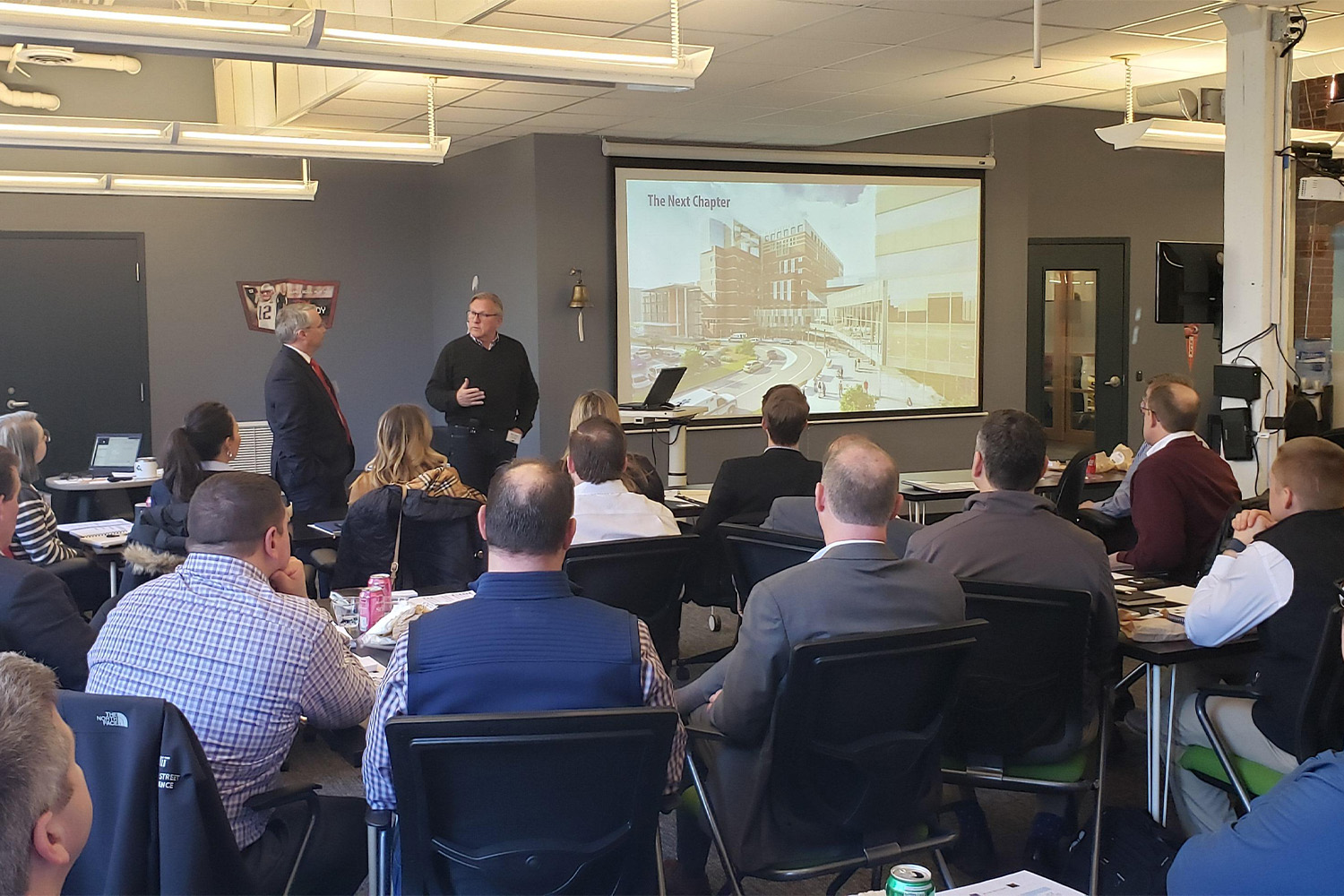Tocci Takeaways from Howard W. Ashcraft, Jr. IPD Lecture
Share

Last Thursday, Tocci hosted its first in a quarterly series of lectures focusing on innovative and transformative ideas within the AEC industry.
We were lucky enough to kick the whole thing off with a very insightful lecture by the pioneer of the IPD contract, Howard W. Ashcraft, Jr. of Hanson and Bridgett, LLP.
Presenting to a packed house, Mr. Ashcraft went over the core foundations of what makes an IPD project a success, citing examples of both large and small projects, as well as dispelling common myths about IPD. These are a few of the takeaways from Tocci employees:
(1) Trust is primary – it takes the relationship to build trust. The idea of how the info will be communicated within a team: decisions – in person; confirmations – by email; meeting schedule changes – over the phone.
(2) Challenges should be hard but achievable – not without great difficulty.
(3) Tell the truth – don’t be nasty but be direct
Lila Tocci, Director of Company Life and Charitable Giving
Buildings are built by people. We use building science to bring precision into the process. We need to use social science to bring the team into the process. It is exciting to see our industry thinking in those terms. I enjoyed Howard’s presentation; I enjoyed Andreas Phelp’s presentation. I am very excited about developing “project cultures.”
Amy Thompson West, Director of Stakeholder Strategies
Howard makes the business case for IPD.
The ROI is there, the reduction in risk is there, and the improvements in time, cost, and quality are there.
The bottom line – IPD is simply the best way to do business.
Richard Lampman, Vice President of Business Development
1. The level of trust within a team is directly related to the level of performance.
2. BIM is more than clash detection. It provides a common level of understanding between the designer and the contractor.
3. Teams of more than 12 lose productivity.
4. Teams with less than 5 lose creativity.
5. Teams need diversity to be creative.
6. It’s critical that someone manages the cost model. Not necessarily instant pricing, but instant feedback on other metrics directly related to costs (i.e. number of joints, fittings, etc.).
7. Large projects need teams within teams.
8. At the end of each meeting, establish the agenda for the next meeting.
9. The more fear that is built into a project, the higher the contingencies will be.
Tom Winterhalter, Senior Project Manager